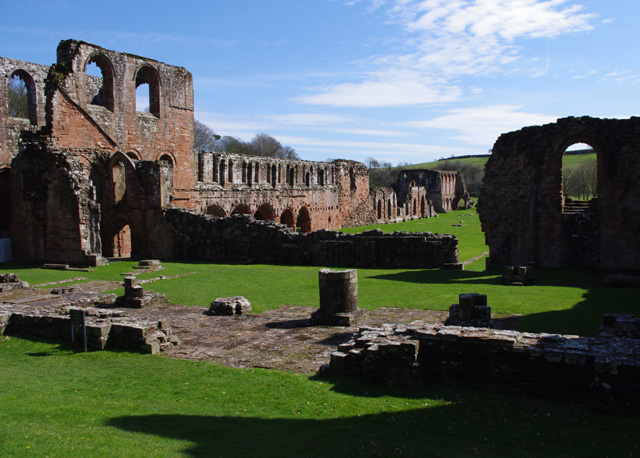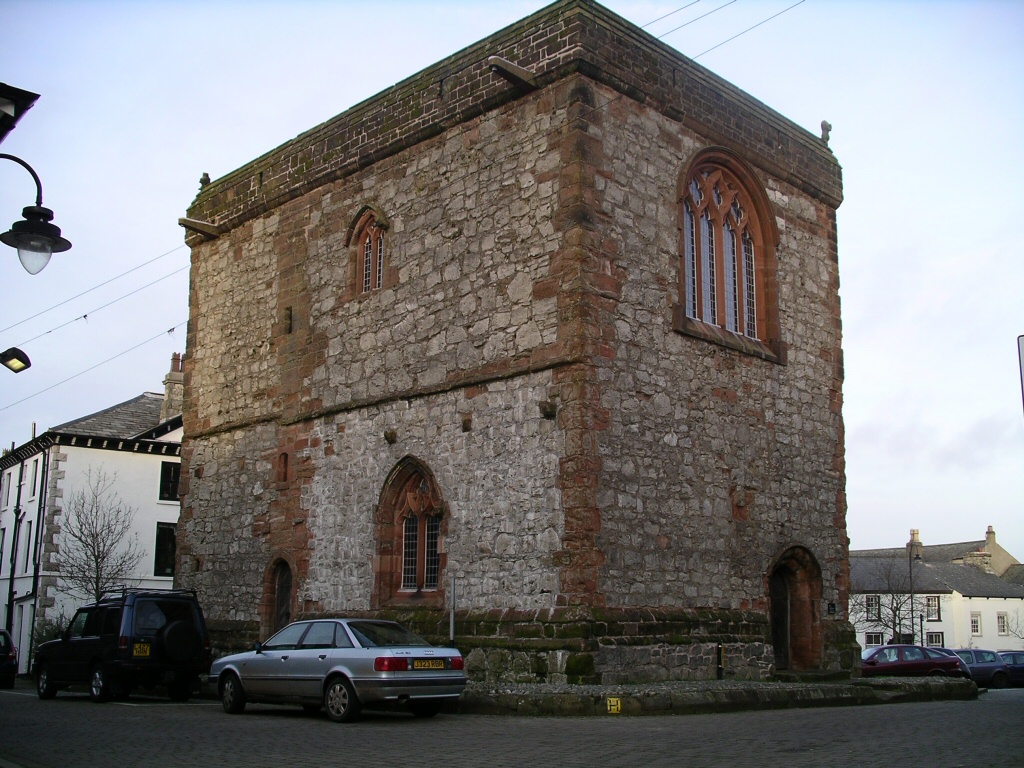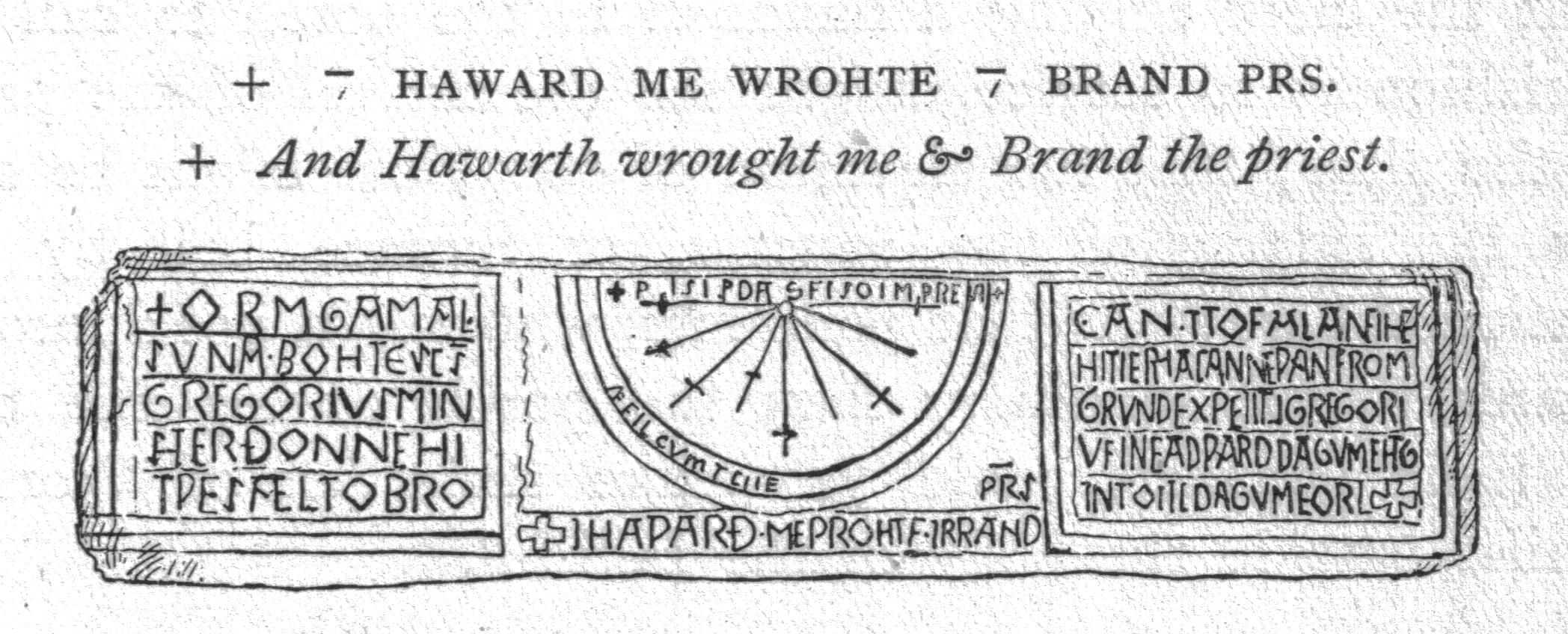|
Newton, Cumbria
Newton is a village in the civil parish of Dalton Town with Newton, in the Barrow-in-Furness district, in the county of Cumbria, England. It is located on the Furness peninsula north-east of the port of Barrow-in-Furness and south of the town of Dalton-in-Furness. Newton was listed in the Domesday Book as being one of the vills or townships forming the Manor of Hougun which was held by Tostig Godwinson, Earl of Northumbria. GB News presenter Steve Dixon was born in the village, as was Richard T. Slone, a painter. Both were in the same year at school and were educated firstly in Newton and then in Dalton-in-Furness. See also * Listed buildings in Dalton Town with Newton Dalton Town with Newton is a civil parish in the Borough of Barrow-in-Furness in Cumbria, England. The parish contains the market town of Dalton-in-Furness, the hamlet of Newton-in-Furness, Newton and surrounding countryside. The civil parish c ... References External links * Villages in Cum ... [...More Info...] [...Related Items...] OR: [Wikipedia] [Google] [Baidu] |
Dalton Town With Newton
Dalton Town with Newton is a civil parish in the Barrow-in-Furness district, in the county of Cumbria, England. The parish includes the town of Dalton-in-Furness and the hamlet of Newton. In 2011 it had a population of 8,125. The parish touches Aldingham, Askam and Ireleth, Lindal and Marton and Urswick. Features There are 70 listed buildings in Dalton Town with Newton Dalton Town with Newton is a civil parish in the Borough of Barrow-in-Furness in Cumbria, England. The parish contains the market town of Dalton-in-Furness, the hamlet of Newton-in-Furness, Newton and surrounding countryside. The civil parish c .... History The parish was formed in 1987 from part of the unparished area of Dalton-in-Furness. References Civil parishes in Cumbria Barrow-in-Furness {{Cumbria-geo-stub ... [...More Info...] [...Related Items...] OR: [Wikipedia] [Google] [Baidu] |
Borough Of Barrow-in-Furness
Barrow-in-Furness is a local government district with borough status in Cumbria, England. It is named after its main town, Barrow-in-Furness. Other settlements include Dalton-in-Furness and Askam-in-Furness. It is the smallest district in the county, but is the most densely populated, with 924 people per square kilometre. The population was 71,980 in 2001, reducing to 69,087 at the 2011 Census. In July 2021 the Ministry of Housing, Communities and Local Government announced that in April 2023, Cumbria will be reorganised into two unitary authorities. Barrow-in-Furness Borough Council is to be abolished and its functions transferred to a new authority, to be known as Westmorland and Furness, which will cover the current districts of Barrow-in-Furness, Eden and South Lakeland. In April 2022 Gareth Davies became the first person to run every single street in the Borough of Barrow-In-Furness. Covering all 1,026 streets over an end to end distance of 201 miles. Background The a ... [...More Info...] [...Related Items...] OR: [Wikipedia] [Google] [Baidu] |
Cumbria
Cumbria ( ) is a ceremonial and non-metropolitan county in North West England, bordering Scotland. The county and Cumbria County Council, its local government, came into existence in 1974 after the passage of the Local Government Act 1972. Cumbria's county town is Carlisle, in the north of the county. Other major settlements include Barrow-in-Furness, Kendal, Whitehaven and Workington. The administrative county of Cumbria consists of six districts ( Allerdale, Barrow-in-Furness, Carlisle, Copeland, Eden and South Lakeland) and, in 2019, had a population of 500,012. Cumbria is one of the most sparsely populated counties in England, with 73.4 people per km2 (190/sq mi). On 1 April 2023, the administrative county of Cumbria will be abolished and replaced with two new unitary authorities: Westmorland and Furness (Barrow-in-Furness, Eden, South Lakeland) and Cumberland ( Allerdale, Carlisle, Copeland). Cumbria is the third largest ceremonial county in England by area. It i ... [...More Info...] [...Related Items...] OR: [Wikipedia] [Google] [Baidu] |
Barrow And Furness (UK Parliament Constituency)
Barrow and Furness, formerly known as Barrow-in-Furness, is a constituency in Cumbria which has been represented in the House of Commons of the UK Parliament by Simon Fell of the Conservative Party since 2019. History and profile The seat of was established by the Redistribution of Seats Act 1885 and covers the southwest part of Cumbria. The largest town in the constituency, Barrow-in-Furness, grew on the back of the shipbuilding industry and is now the site of the BAE Systems nuclear submarine and shipbuilding operation. This reliance on the industry aligns many of its columnists and in its community with strong nuclear deterrents, from which Labour has recoiled since its involvement in the Iraq War that removed dictator Saddam Hussain. Labour Cabinet member Albert Booth represented Barrow from 1966 for many years but was defeated in 1983, in the aftermath of the Falklands War, by a Manchester lawyer, Cecil Franks of the Conservative Party, who retained the seat until 1992. Loc ... [...More Info...] [...Related Items...] OR: [Wikipedia] [Google] [Baidu] |
Furness
Furness ( ) is a peninsula and region of Cumbria in northwestern England. Together with the Cartmel Peninsula it forms North Lonsdale, historically an exclave of Lancashire. The Furness Peninsula, also known as Low Furness, is an area of villages, agricultural land and low-lying moorland, with the industrial town of Barrow at its head. The peninsula is bordered by the estuaries of the River Duddon to the west and the River Leven in Morecambe Bay to the east. The wider region of Furness consists of the peninsula and the area known as ''High Furness'', which is a relatively mountainous and sparsely populated part of England, extending inland into the Lake District and containing the Furness Fells. The inland boundary of the region is formed by the rivers Leven, Brathay and Duddon, and the lake of Windermere. Off the southern tip of Furness is Walney Island, long, as well as several smaller islands. The Borough of Barrow-in-Furness, which developed when the Furness iron ind ... [...More Info...] [...Related Items...] OR: [Wikipedia] [Google] [Baidu] |
Barrow-in-Furness
Barrow-in-Furness is a port town in Cumbria, England. Historically in Lancashire, it was incorporated as a municipal borough in 1867 and merged with Dalton-in-Furness Urban District in 1974 to form the Borough of Barrow-in-Furness. In 2023 the borough will merge with Eden and South Lakeland districts to form a new unitary authority; Westmorland and Furness. At the tip of the Furness peninsula, close to the Lake District, it is bordered by Morecambe Bay, the Duddon Estuary and the Irish Sea. In 2011, Barrow's population was 56,745, making it the second largest urban area in Cumbria after Carlisle. Natives of Barrow, as well as the local dialect, are known as Barrovian. In the Middle Ages, Barrow was a small hamlet within the parish of Dalton-in-Furness with Furness Abbey, now on the outskirts of the town, controlling the local economy before its dissolution in 1537. The iron prospector Henry Schneider arrived in Furness in 1839 and, with other investors, opened the Furness Railwa ... [...More Info...] [...Related Items...] OR: [Wikipedia] [Google] [Baidu] |
Dalton-in-Furness
Dalton-in-Furness is a town and former civil parish in the Borough of Barrow-in-Furness, Cumbria, England. In 2011 it had a population of 7,827. It is located north east of Barrow-in-Furness. History Dalton is mentioned in the Domesday Book, written as "Daltune" as one of the townships forming the Manor of Hougun held by Tostig Godwinson, Earl of Northumbria. Historically, it was the capital of Furness. The ancient parish of Dalton covered the area which is now occupied by the borough of Barrow-in-Furness. The town is now in the civil parish of Dalton Town with Newton. Historically a part of Lancashire, the town is associated with a number of famous artists, including George Romney. In 1961 the parish had a population of 10,316. Dalton in Furness was formerly a civil parish, it was abolished in 1974 and became an unparished area, on 1 April 1987 the unparished area was abolished to form the parishes of "Askam and Ireleth", "Dalton Town with Newton" and "Lindal and Marton". The ... [...More Info...] [...Related Items...] OR: [Wikipedia] [Google] [Baidu] |
Domesday Book
Domesday Book () – the Middle English spelling of "Doomsday Book" – is a manuscript record of the "Great Survey" of much of England and parts of Wales completed in 1086 by order of King William I, known as William the Conqueror. The manuscript was originally known by the Latin name ''Liber de Wintonia'', meaning "Book of Winchester", where it was originally kept in the royal treasury. The '' Anglo-Saxon Chronicle'' states that in 1085 the king sent his agents to survey every shire in England, to list his holdings and dues owed to him. Written in Medieval Latin, it was highly abbreviated and included some vernacular native terms without Latin equivalents. The survey's main purpose was to record the annual value of every piece of landed property to its lord, and the resources in land, manpower, and livestock from which the value derived. The name "Domesday Book" came into use in the 12th century. Richard FitzNeal wrote in the ''Dialogus de Scaccario'' ( 1179) that the book ... [...More Info...] [...Related Items...] OR: [Wikipedia] [Google] [Baidu] |
Manor Of Hougun
The Manor of Hougun is the historic name for an area which now forms part of the county of Cumbria in North West England. Of the three most northern counties of England surveyed in the Domesday Book of 1086 (Northumbria, Durham and Cumbria), only the southern band of land in the south of Cumbria was recorded. The westernmost entries for Cumbria, covering the Duddon and Furness Peninsulas are largely recorded as part of the ''Manor of Hougun''. The entry in Domesday Book covering Hougun refers to the time (ca. 1060) when it was held by Tostig Godwinson (c. 1026 – 25 September 1066), Earl of Northumbria. Location The exact location of Hougun has been long disputed and Millom is often suggested, although High Haume near Dalton-in-Furness has also been proposed, given that it was recorded in 1336 as Howehom. It has also been suggested that the centre of the district was Furness, and that the territory included the Millom area, plus part or all of Cartmel – what would later be the ... [...More Info...] [...Related Items...] OR: [Wikipedia] [Google] [Baidu] |
Tostig Godwinson
Tostig Godwinson ( 102925 September 1066) was an Anglo-Saxon Earl of Northumbria and brother of King Harold Godwinson. After being exiled by his brother, Tostig supported the Norwegian king Harald Hardrada's invasion of England, and was killed alongside Hardrada at the Battle of Stamford Bridge in 1066. Background Tostig was the third son of the Anglo-Saxon nobleman Godwin, Earl of Wessex and Gytha Thorkelsdóttir, the daughter of Danish chieftain Thorgil Sprakling. In 1051, he married Judith of Flanders, the only child of Baldwin IV, Count of Flanders by his second wife, Eleanor of Normandy. In 1086, the Domesday Book recorded twenty-six vills or townships as being held by Earl Tostig, forming the Manor of Hougun which now forms part of the county of Cumbria in north-west England. Earl of Northumbria In the 19th century, the antiquarian Edward Augustus Freeman posited a hypothesis claiming that Edward the Confessor, King of England, was pursuing a policy of " Normani ... [...More Info...] [...Related Items...] OR: [Wikipedia] [Google] [Baidu] |
Earl Of Northumbria
Earl of Northumbria or Ealdorman of Northumbria was a title in the late Anglo-Saxon, Anglo-Scandinavian and early Anglo-Norman period in England. The ealdordom was a successor of the Norse Kingdom of York. In the seventh century, the Anglo-Saxon kingdoms of Bernicia and Deira were united in the kingdom of Northumbria, but this was destroyed by the Vikings in 867. Southern Northumbria, the former Deira, then became the Viking kingdom of York, while the rulers of Bamburgh commanded territory roughly equivalent to the northern kingdom of Bernicia. In 1006 Uhtred the Bold, ruler of Bamburgh, by command of Æthelred the Unready became ealdorman in the south, temporarily re-uniting much of the area of Northumbria into a single jurisdiction. Uhtred was murdered in 1016, and Cnut then appointed Eric of Hlathir ealdorman at York, but Uhtred's dynasty held onto Bamburgh. After the Norman Conquest the region was divided into multiple smaller baronies, one of which was the earldom of North ... [...More Info...] [...Related Items...] OR: [Wikipedia] [Google] [Baidu] |
Steve Dixon (newsreader)
Stephen Dixon (born 1 March 1974) is an English news presenter. Formerly presenting '' Sky News Sunrise'', '' Sky News at Seven'' and ''Sky News at Ten'' on Sky News, Dixon now co-presents ''Breakfast with Stephen and Anne'' on GB News. Journalism career Dixon's career began at Nottingham Trent University where he read for a BA in Broadcast Journalism, graduating in 1995. Before working for Sky News, Dixon worked for ITN as both a presenter and producer for ITV, NBC Superchannel, and Channel 5. He also helped work as a producer and programme editor on the Channel 4 ''Big Breakfast'' News, and presented on finance channel Simply Money with Angela Rippon. From January 2012 to October 2019, Dixon presented ''Sunrise'' on Sky News, featuring alongside Gillian Joseph, and Isabel Webster. From October 2019, he presented ''Sky News @ Breakfast'' with Gillian Joseph, on Friday, Saturday and Sunday on Sky News. In November 2021, it was announced that Dixon was joining GB News the ... [...More Info...] [...Related Items...] OR: [Wikipedia] [Google] [Baidu] |





